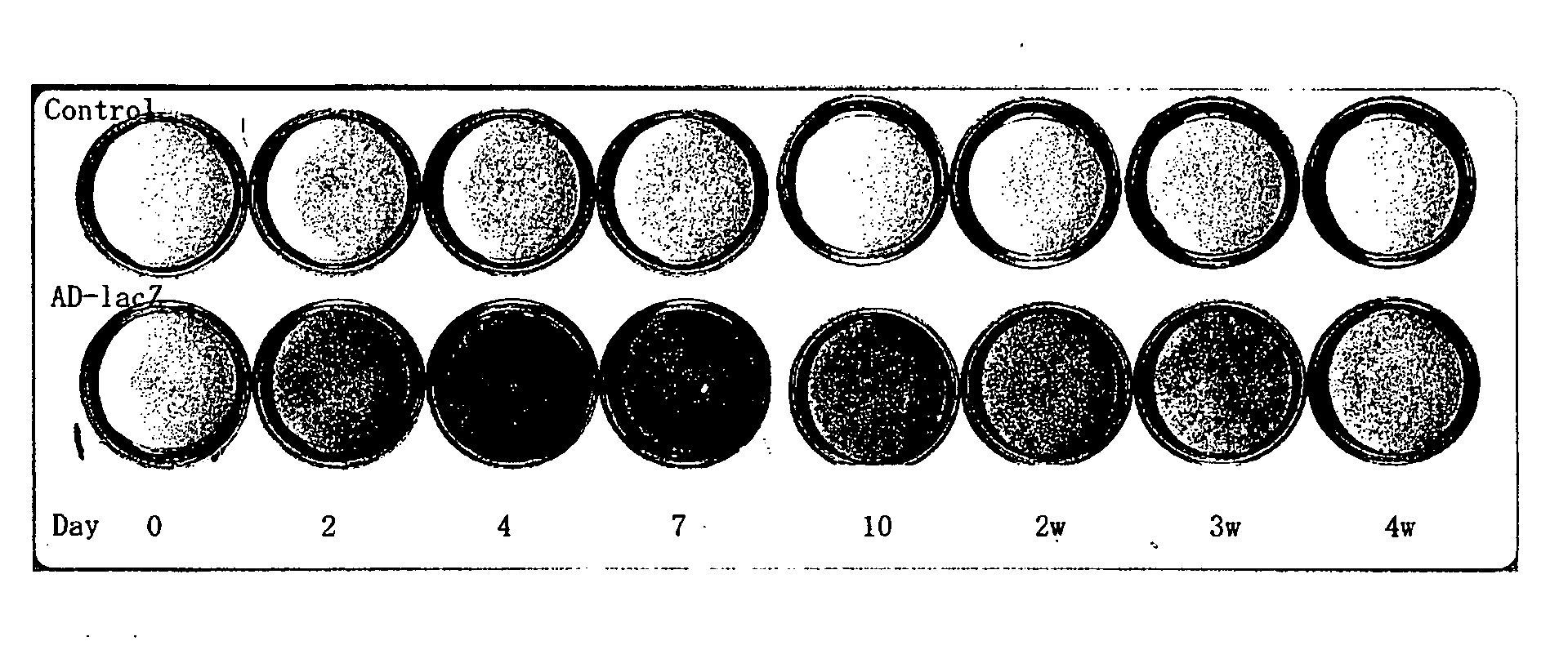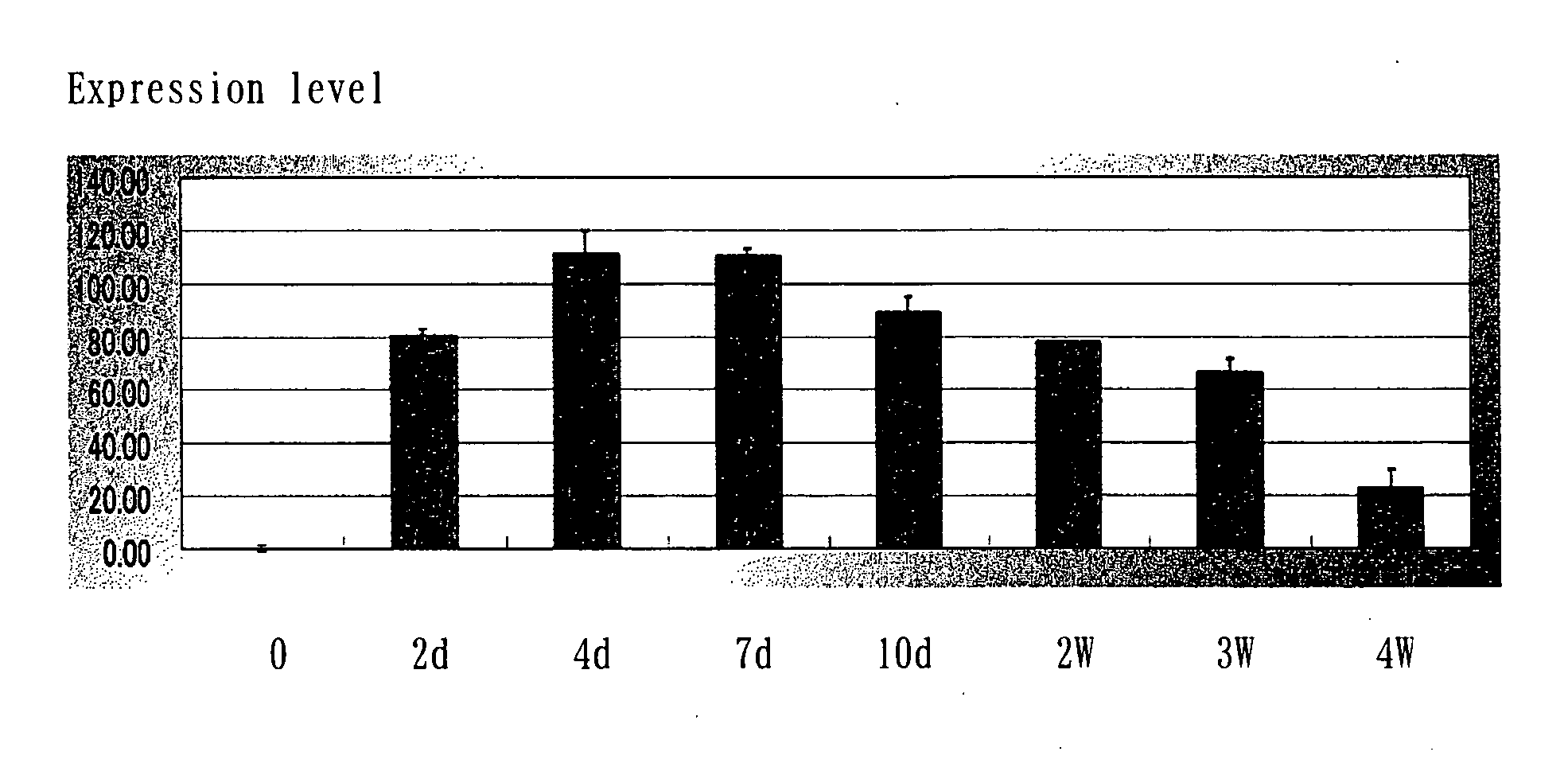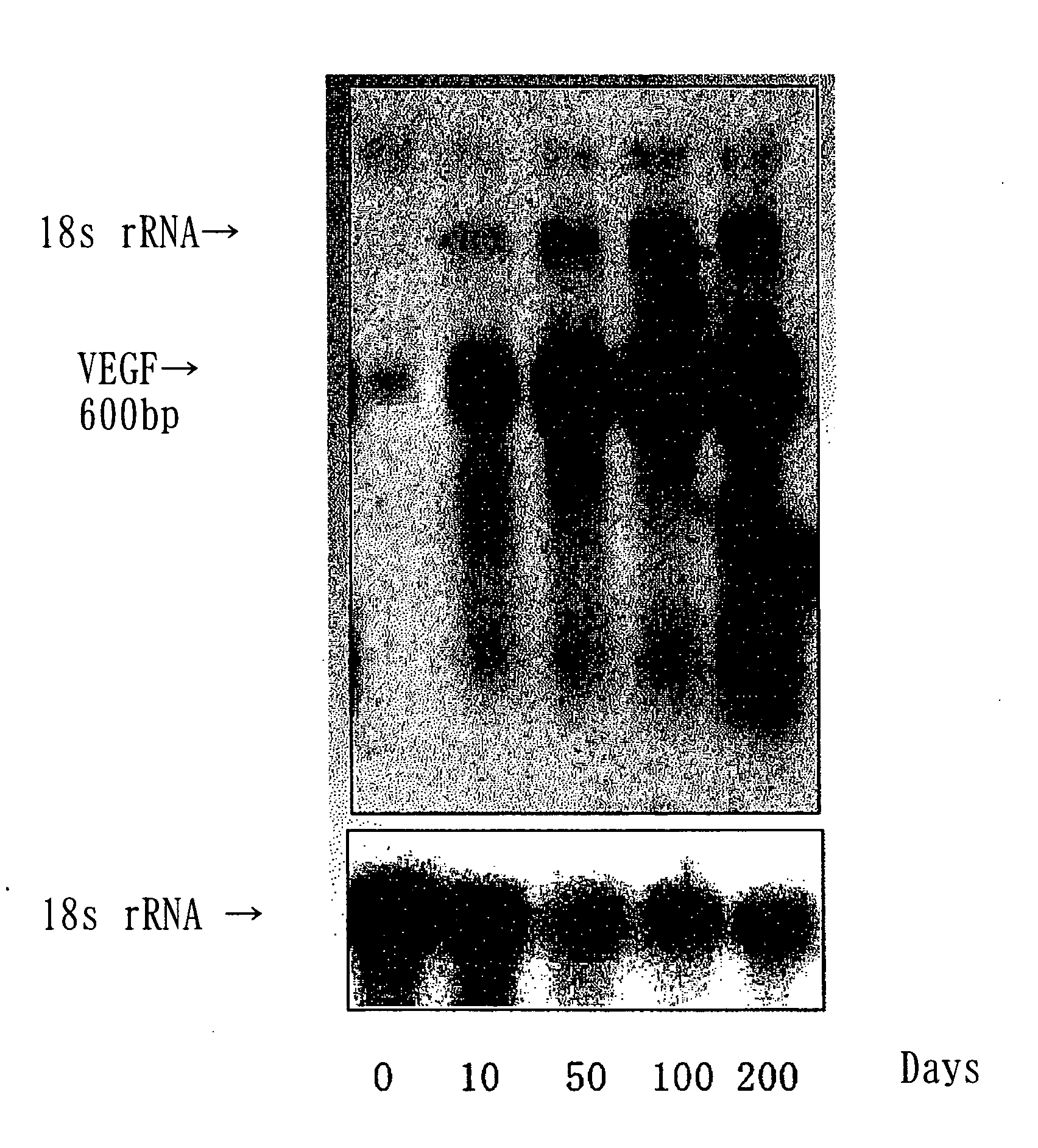Implant containing cells having growhfactor gene transferred thereinto
a technology of growth factor and implant, which is applied in the direction of prosthesis, peptide/protein ingredient, biocide, etc., can solve the problems of imposing a heavy burden on patients, limited amount of artificial implants, and inability to achieve mechanical and structural properties or bioadaptability as good as those of natural tissues, and achieves rapid bone regeneration and high bioadaptability.
- Summary
- Abstract
- Description
- Claims
- Application Information
AI Technical Summary
Benefits of technology
Problems solved by technology
Method used
Image
Examples
example 1
Acceleration of Angiogenesis by VEGF Gene-Transfected Rat Osteoblasts
1. Experimental Method
1) Preparation of Adenoviral Vector
(i) cDNA of Mouse VEGF
[0065] cDNA (SEQ ID NO: 1) of mouse VEGF was provided by Dr. Watanabe of the Tokyo Institute of Technology.
(ii) Preparation of Recombinant Adenoviral Vector
[0066] The cDNA of VEGF was inserted into the SwaI site of the cosmid vector pAxCAwt using the commercialized Adenovirus Cre / loxP Kit (Takara Shuzo Co., Ltd.), and a recombinant adenoviral vector was prepared according to the manufacturer's instructions of the kit. The insertion of VEGF was confirmed based on the pattern and the sequence of the restriction enzyme. Since the vector is E1-deleted adenovirus vector, the virus can not replicate in the target cell after infection. Also, this virus vector comprises a stuffer in the upstream region of the target gene and thus expresses the gene only when it is cotransfected with the Cre recombinase-expressing virus. The titer of th...
example 2
Regeneration of Bone Tissues by VEGF Gene-Transfected Rat Osteoblast
1) Testing Method
[0081] Bone marrow was obtained from the femur of a Fisher rat and then cultured in a T75 flask containing α-MEM and 15% FBS at 37° C. in the presence of 5% carbon dioxide for 6 days. Thereafter, inducers of differentiation into osteoblasts, such as dexamethasone, β-glycerophosphate, or ascorbic acid, were added, and culture was conducted for an additional 4 days. When the cells became substantially confluent in the T75 flask (1 to 3×107 cells / flask), they were infected with AD-VEGF (moi=100) in the same manner as in Example 1, trypsinized 1 day thereafter, seeded on porous ceramics (Osferion®, Olympus Optical Co., Ltd.; average pore diameter: 200 μm; porosity of 75%) at adensity of 2,000,000 cells / ml or higher, and then cultured under the same conditions as above.
[0082] Bone defects were provided on the femur of the Fisher rat 1 day thereafter, and the aforementioned ceramics (2×2×2 mm 3) were ...
PUM
 Login to View More
Login to View More Abstract
Description
Claims
Application Information
 Login to View More
Login to View More - R&D
- Intellectual Property
- Life Sciences
- Materials
- Tech Scout
- Unparalleled Data Quality
- Higher Quality Content
- 60% Fewer Hallucinations
Browse by: Latest US Patents, China's latest patents, Technical Efficacy Thesaurus, Application Domain, Technology Topic, Popular Technical Reports.
© 2025 PatSnap. All rights reserved.Legal|Privacy policy|Modern Slavery Act Transparency Statement|Sitemap|About US| Contact US: help@patsnap.com



